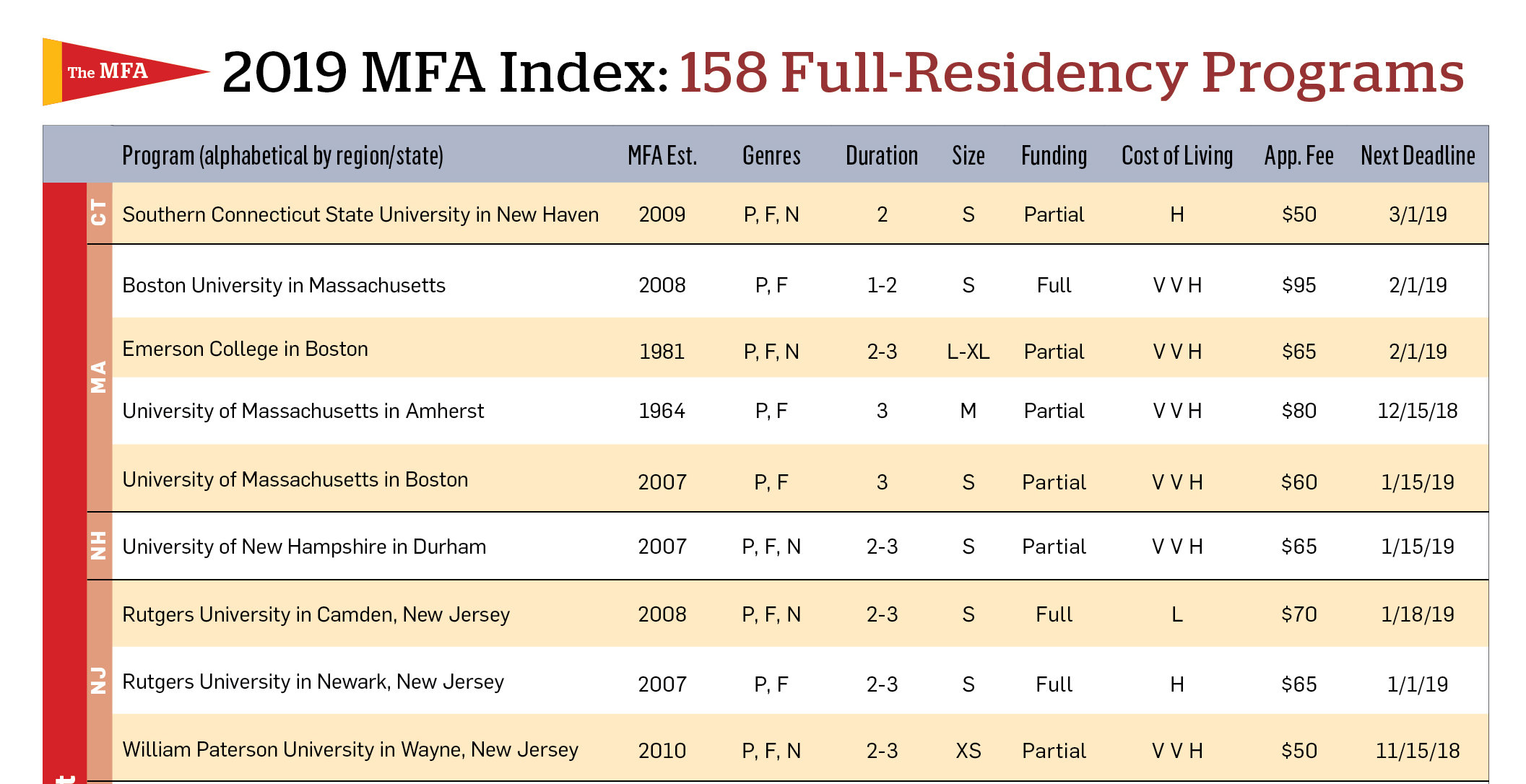With well over two hundred MFA programs in the United States, choosing which ones to research, much less apply to, can be a daunting prospect. The 2019 MFA Index is designed to make that process easier by providing information about 158 full-residency programs, organized by region and state, and 64 low-residency programs. Start by considering these questions to ask before you apply. Do you think a little California sunshine might do you and your writing good? In the following pages you’ll find fifteen full-residency programs located in the Golden State. Have you decided that you want to attend only a program that offers full funding? Here are sixty-five full-residency programs that say they’ll foot the tuition bill for all their students.
Once you have chosen which programs you want to investigate further, you can take the time to familiarize yourself with each one and determine whether it’s a good match for you. The 2019 MFA Index provides the basic specs of a program as well as some application information to help you stay on schedule, but many of the most important and unquantifiable aspects of a program—faculty, curriculum, precise funding structure, and so on—require more research. Much of this information can be found in the Poets & Writers MFA database (pw.org/mfa) and on each program’s website, but you should also consider reading the work of faculty and alumni, attending open houses, and speaking with alumni and program staff.
We recommend you pay particular attention to a program’s funding: While sixty-five full-residency programs offer full tuition support to all students for the duration of the program, the remaining ninety-three report that they offer partial funding, which can range from just a handful of small scholarships to full assistantships or fellowships for 85 percent of students. As always the impact of funding must be contextualized against the cost of tuition: One program’s tuition might be so high that even if you are offered a partial tuition waiver, it might cost less to attend a program that offers you no funding. Many programs list estimated tuition on their websites; if not, current tuition rates are usually available on the website of the host university or college.
The index also offers a bird’s-eye view of the world of creative writing MFA programs from year to year. This year we added six full-residency programs and six low-residency programs, five of which were established in the past two years. Many low-residency programs added residencies abroad; nineteen programs now offer residencies outside of the continental United States in places as disparate as an island in the Caribbean and a medieval castle in Italy. More programs have expanded their coursework and offer degrees in genres apart from poetry, fiction, nonfiction, and translation—the most popular additional genres are screenwriting, writing for television, and playwriting, followed closely by writing for children and young adults, genre fiction, and graphic narratives.
Whether you are applying to an MFA this year or just testing the waters, the 2019 MFA Index offers a starting point for identifying the writing program that is best for you. We hope it is a significant first step in your journey to find the community and environment that will help you grow as a writer. 









